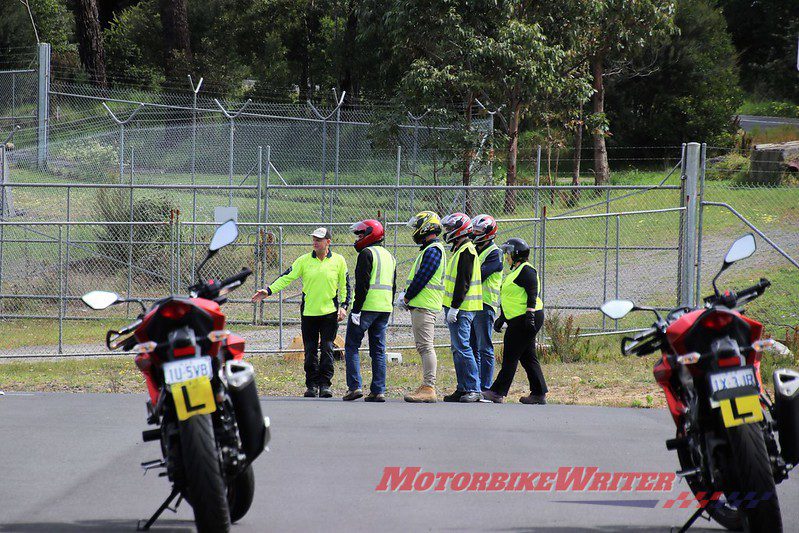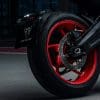(Contributed post for North American learner riders)
There are dozens of benefits to learning to ride a motorcycle. These vehicles are more cost-effective than a car, they get better gas mileage, they’re easy to park, and they’re just plain cool! Not to mention the fact that it’s absolutely thrilling to ride in the open air with an incredible machine beneath you.
But motorcycle riding should not be taken lightly. It’s not as commonplace as getting your driver’s license, and though it’s not difficult to learn, it’s vital that you know what you’re doing. Motorcycles are not equipped with the same safety features as a car, and an accident could be deadly.
As long as you’re well-prepared and invest in the proper safety equipment, you’ll be in good shape for your first ride. Here’s what you should know.
1. Understand Riding Anxiety
A lot of people don’t realize that riding a motorcycle can actually come with a lot of anxiety. It’s just part of the riding experience, and you need to understand it and know how to manage it. If you have an anxiety disorder, the stress of getting on a motorcycle can be even worse! You’d hate to invest all the time and money into learning to ride, only to discover that you’re too anxious to ride your bike.
According to Ken Condon of the online magazine Motorcyclist, anxiety can occur “even in ideal circumstances.” Even standard maneuvers like making a U-turn or passing pedestrians can cause anxiety to surface.
Condon continues by explaining that anxiety can be detrimental to the safety of your ride. “[Stress] can present as simple muscle tension and narrowed focus, which can make your bike seem reluctant to turn in easily or hold a line in corners,” he says. “You will have difficulty finding and following cornering lines. Your tension is preventing the bike from doing what it can do.”
He stresses the importance of getting anxiety under control for the safety of your ride and your enjoyment. There are many strategies for getting this anxiety in check, including checking yourself frequently for anxiety and using breathing and positive thinking to get it in check.
Those who experience regular anxiety may also want to consider a supplemental anxiety aid, like CBD gummies. You can carry these on your ride and eat them when you start to feel anxious. They work quickly to relieve anxiety without making you high or putting undue side effects on you.
2. Enrol in a Course
While you can get away with having a friend or family member teach you how to drive a car, you shouldn’t try the same thing with a motorcycle. There are too many risks at play, and it’s much better to learn everything there is about your motorcycle and how to safely drive it to leave it up to an amateur.
The good thing about a motorcycle course is that it’s a very short process if you already have your driver’s license. Typically, a course lasts just a few days with a certified instructor. They’ll teach you all the motorcycle laws, show you how to ride, and even ride with you a few times to make sure you get the hang of it.
Before enrolling, check that your instructor is certified and experienced so you’re getting the best experience for your money.
3. Invest in Safety Gear
The key word here is invest. This means you don’t want to simply purchase the most cost-effective safety equipment you can find, nor do you want to get only the bare minimum. While motorcycle riding is considered safe if you know what you’re doing, an accident is significantly more dangerous on a motorcycle than in an enclosed car with safety belts and airbags installed.
Therefore, you can’t put a price on your safety. You’ll learn a little about the kind of safety gear in your motorcycle riding course, but you should do extra research on your own. It’s a good idea to wear thick clothing or a motorcycle suit to reduce your risk of your body being skinned if you’re flung to the ground (It’s no coincidence that bikers are always wearing leather).
A top-quality helmet and gloves are also essential. The helmet should have considerable padding and cover your entire head to protect it during an impact. Not to mention, the visor will keep you from eating bugs!
4. Gain Confidence in Your Skills
Even after taking a certified course, it’s vital that you practice, practice, practice. Most importantly, practice in a more controlled setting before riding through traffic or on a high-speed freeway.
For example, you might practice in a large, empty parking lot. It will give you plenty of experience riding at low speeds, turning sharply, and staying upright to help you gain confidence in your abilities. Consider bringing traffic cones and setting up a course, just like you would in a driver’s course practice.
When you’re feeling confident enough to hit the open road, take it easy before riding in rush-hour traffic or on the freeway. Don’t get too cocky—the stakes are too high if you’re in an accident.
Most importantly, don’t invite passengers to ride with you until you’re fully confident on your bike. Adding additional weight to the back of your bike requires different dynamics when riding, and you’re responsible for their safety. It’s best to practice with a passenger in a controlled setting before taking it on the open road.
5. Keep a Well-Oiled Machine
You don’t need to know everything there is about motorcycle engines, but it’s helpful to understand the simple things that make your bike go, just like you would with your car. You’ll want to check the oil, inspect light bulbs, check tire pressure, potentially rotate tires, identify problems with your chain, and other basics.
There are two primary reasons to keep up with machine maintenance. First of all, you’ll likely avoid huge repair bills if you maintain your vehicle from the start. Secondly, your safety is called into question if you’re not paying attention to the routine maintenance.
It might be worthwhile to invest in a basic motorcycle maintenance class. You’ll learn the basics of keeping your biked tuned up so you can avoid problems down the road.
Your preparation and education is key to maximizing your motorcycle-riding experience. There’s nothing like being on the open road with real confidence in your riding abilities.



